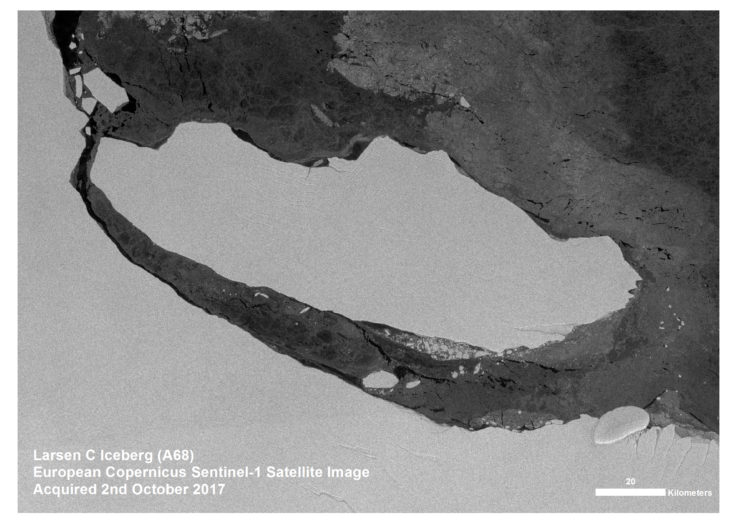When iceberg A68 calved from Antarctica's Larsen C Ice Shelf last July, it did more than set a 6,000-km² (2,300-mi²), 190-m (625-ft) thick ice cube adrift. It also exposed an undersea ecosystem that had been hidden for 120,000 years. To better understand how this lost world will respond to environmental changes, a team led by the British Antarctic Survey (BAS) is preparing to set out to explore the 5,818 km² (2,246 mi²) of newly-exposed seabed.
According to BAS mission leader Dr Katrin Linse, the expedition is an exercise in hurry up and wait. Because marine life can respond quickly and dramatically to environmental changes, the survey mission aboard the BAS research ship RRS James Clark Ross must reach the area as quickly as possible – preferably by February 2018, when the team will spend three weeks conducting studies. This means making preparations in months that normally take years.
Unfortunately, A68 hasn't drifted very far from the ice shelf and until the berg, which is four times the size of London, shifts out of the way, the team won't be able to get into the exposed area. BAS is monitoring the ice floe using satellites to determine the safest entry route and when the seas will be clear enough to depart. They will be joined by observation flights from BAS's Rothera Research Station and will coordinate with glaciologists monitoring the Larsen C ice shelf's movements.

"It's exciting to think about what we might find," says Linse. "Using a range of different techniques, our multi-disciplinary approach by an international team, will examine the marine ecosystem spanning the water column from the surface of the ocean all the way to the seabed and the sediment."
Dr Phil Trathan, Head of Conservation Biology at BAS, says that the calving of A68 will allow scientists an unprecedented opportunity to study how marine species on or near the seabed can colonize an area. The hope is that this will help to better understand how such species respond to climate changes as well as establish a baseline before new species move in.
"The calving of A68 offers a new and unprecedented opportunity to establish a scientific programme to address questions focussed on the mobility and colonisation capacity of benthic marine species (those that live in or on the ocean floor)," says Trathan. "We hope that we'll be able to answer fundamental questions relating to the sustainability of polar continental shelves under climate change, including potentially the processes by which benthic populations migrate, the extent to which benthic organisms act as a biological carbon sink, and the degree to which the distribution of marine benthos can be used to interpret past responses to climate change in various systems.
"It's important we get there quickly so we can make a baseline assessment before the newly exposed marine environment changes and new species begin to colonise the area."
Additionionally, the BAS survey has practical as well as scientific implications because A68 poses a serious threat to navigation.
"We are watching the progress of the Larsen berg very closely as we haven't seen a berg of this size in the area for some time and it has the possibility to obstruct shipping lanes in the area, especially as it starts to break up and disperse," says Andrew Fleming, Head of Remote Sensing at BAS.
Source: BAS






